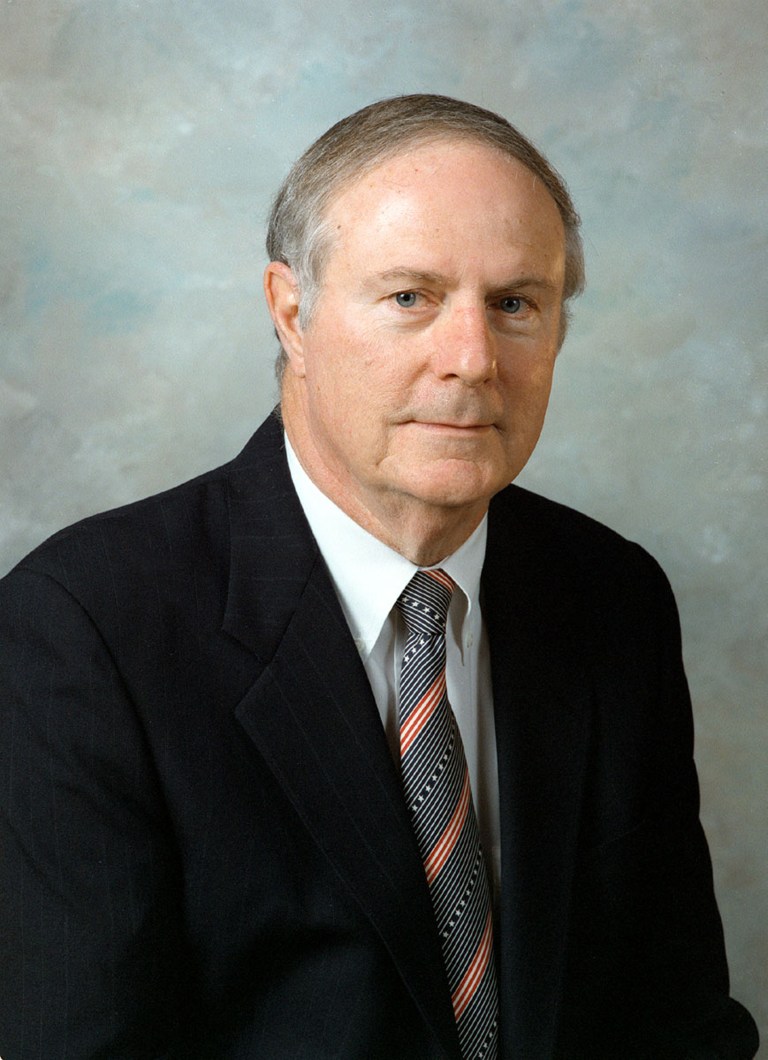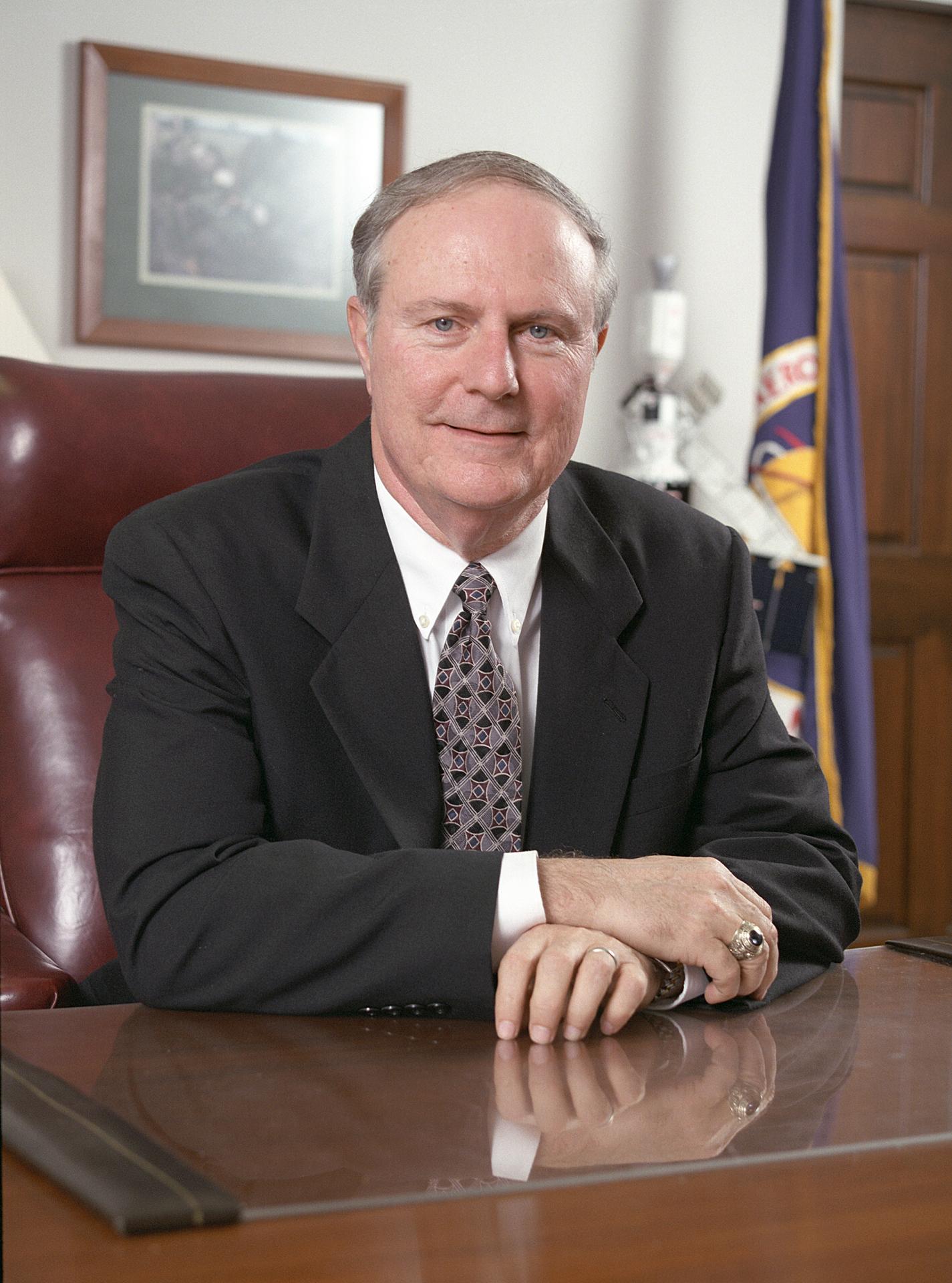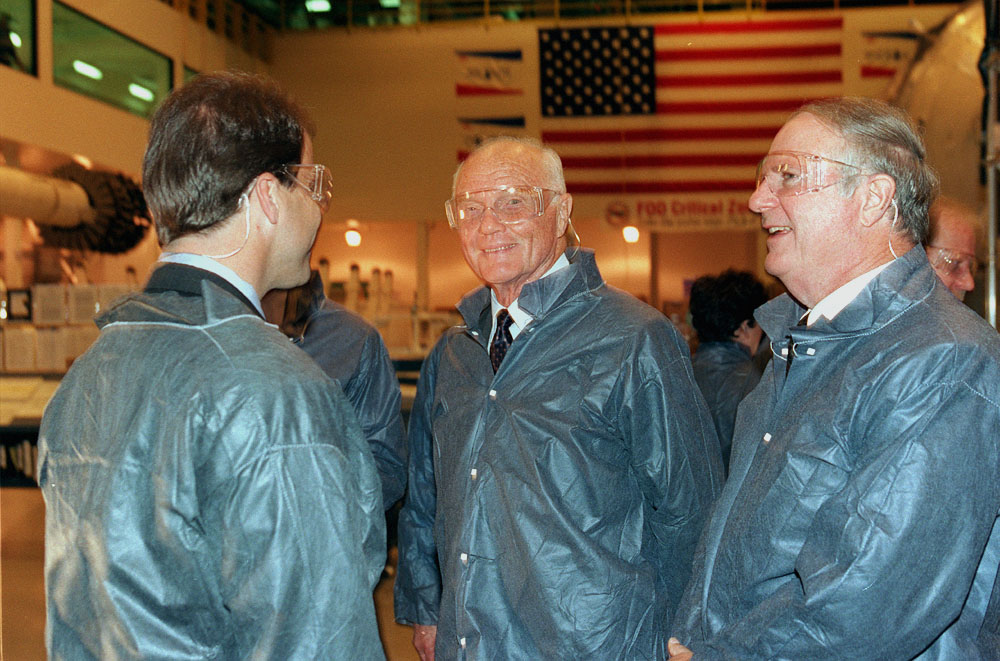
J. Wayne Littles
Former Center Director at Marshall Space Flight Center (1996–1998)
Dr. Littles participated in many of NASA’s major programs including Saturn/Apollo, Skylab, Spacelab, Hubble, Chandra, Shuttle, and the International Space Station.
He received a Bachelor in Mechanical Engineering from Georgia Tech, a Masters in Mechanical Engineering from the University of Southern California and his Doctor of Philosophy from the University of Texas with a major in Mechanical Engineering and a minor in Mathematics. He also is a graduate of the Advanced Management Program, Harvard University. He was elected to the TAU BETA PI Engineering Honorary Society, the PI TAU Sigma Mechanical Engineering Honorary Society, the PHI ETA Sigma Honorary Society and the Briaerean Co-op Honorary Society.
Wayne Littles began his professional career working for Rocketdyne, developing the H-1 and F-1 Saturn rocket engines for the Apollo Program missions to the moon. He also managed the Heat Transfer Research Laboratory for Teledyne-Brown Engineering, working primarily on heat transfer and fluid mechanics research projects and developing analysis techniques for MSFC.
He joined the MSFC as an engineer in 1967. He served as a Section Chief and as Branch Chief responsible for Thermal and Life Support Systems for Skylab and later for Spacelab and Spacelab Missions. He served as a Division Chief responsible for all thermal, fluid mechanics and stress analysis for all MSFC programs including Shuttle, Hubble and Chandra. He then served as Associate Director of Engineering, responsible for engineering for MSFC programs. He became Director of Science and Engineering for MSFC in 1988, managing 2000 engineers and scientists with responsibility for all engineering and science at MSFC.
He was promoted to Deputy Director for the Marshall Space Flight Center and, after serving for five years, he was promoted to Chief Engineer for the National Aeronautics and Space Administration at NASA Headquarters, where he had technical responsibility for all NASA programs. He served as Associate Administrator for the NASA Office of Space Flight, responsible for management of Space Shuttle, Space Station, a wide range of Science Programs, a budget of $6.5 Billion dollars, and four NASA field centers. He returned to the Marshall Space Flight Center in Jan. 1996 and served as Director of the Center. During this period the Center was managing Shuttle projects, Chandra, Micro Gravity and Global Hydrology Research, Propulsion Technology and International Space Station elements with a budget of $2.5 Billion dollars. He retired from NASA in 1998.
After retiring from NASA he served as Vice President and General Manager for Pratt and Whitney’s liquid space propulsion business where he was responsible for development of the RD 180 rocket engine in cooperation with NPO Energomash, Russia, the RL 10 Program and hypersonic programs.

He twice received the nation’s highest civil service award, the Presidential Rank of Distinguished Executive, once from President George H. W. Bush and once from President Clinton. He also received the nation’s second highest award, the Presidential Rank of Meritorious Executive from President Reagan. He twice received NASA’s highest award, the Distinguished Service Medal. He also received two NASA Exceptional Service Medals, the NASA Outstanding Leadership Medal and the NASA Medal for Equal Opportunity. He is a Fellow, American Institute of Aeronautics and Astronautics, and has received the Roger W. Jones Award for Executive Leadership from American University. He has been elected to the Academy of Distinguished Engineering Alumni, Georgia Tech.
























